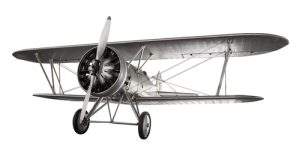
The unexplained mystery of the Carroll A. Deering
On January 31, 1921, the Carroll A. Deering, a commercial schooner was found run aground and abandoned, just off Cape Hatteras, North Carolina. The inexplicable disappearance of the Deering’s twelve-man crew, from a ship that was apparently in good condition, has become one of the great maritime mysteries of the past century. So, just what is the story of the Carroll A. Deering’s strange demise?
The Final Voyage
The Carroll A. Deering was a 225-feet long, 1,879 tons, five-mast schooner. Named after the son of the owner, it was built in 1919, in Bath, Maine by the G.G. Deering Company. The ship began her final voyage on August 26, 1920, bound for Rio de Janeiro with a cargo of coal. However, a few days out, the Deering’s Captain, William Merritt suddenly fell very ill and the ship had to turn back to port, putting in at Lewes, Delaware. Captain Willis B. Wormell, a retired 66-year-old veteran of the sea, was recruited to replace the unwell Merrit for the ship’s voyage to Brazil.

Launch of the Carroll A. Deering in Bath, Maine in 1919. Image credit: Wikimedia Commons
On September 8, the Deering, with Captain Wormell in command, set sail for Brazil. The ship arrived in Rio and delivered her cargo without incident. Wormell met up with an old friend there, Captain George Goodwin. He reportedly mentioned to Goodwin his growing dissatisfaction with the crew, especially the often drunk first mate, Charles B. McLellan. Wormell stated that the crew was unruly and he didn’t trust them, with the exception of the engineer, Herbert Bates.
The Deering left Rio on December 2, stopping off on its return journey at Bridgetown, Barbados to pick up supplies. It was there that McLellan was jailed there for a drunken misdemeanour. However, the captain managed to get him released just in time for the vessel’s scheduled sailing.
The next time the ship was spotted was on January 29, by the lightship keeper of the Cape Lookout Lightship, Captain Thomas Jacobson in North Carolina. The Deering hailed the lightship, and a crewman reported that the ship had lost its anchors. He asked the keeper to inform the ship’s owners as quickly as possible. The lightship keeper would later testify that the crew of the Carroll A. Deering appeared to be “milling around” suspiciously on deck.
A Deserted Ship
Two days later, on the morning of January 31, C.P. Brady of the Cape Hatteras Coast Guard Station, spotted the seemingly deserted schooner, aground on the outer edge of Diamond Shoals. He reported that while the ship’s sails were still set, it appeared the crew was missing. Brady said, ‘’it seemed as though they’d left in a hurry.’’
Due to heavy seas, it proved impossible to board the ship until February 4. It quickly became clear that the schooner had been completely abandoned and that the vessel couldn’t be saved. Her steering equipment was found to be severely damaged; the wheel was shattered and the rudder disengaged from its stock. The ship’s log and navigation equipment were gone, as were all the crew’s personal effects, along with her two lifeboats.
In the ship’s galley, it appeared food was under preparation for the next meal, further suggesting the abandonment had been sudden. A Coast Guard cutter attempted to salvage the Deering, but the task was found to be impossible. The vessel was declared a navigational hazard, and thus on March 4, was scuppered using dynamite. Wooden timbers from the schooner eventually washed ashore on Hatteras Island, when they were then used by locals to build houses.
The Investigation
The U.S. government launched an immediate investigation into the disappearance of the Deering’s crew. Five government departments became involved; Commerce, Treasury, Justice, Navy, and State, each running its own inquiry. It was found that as well as the Deering’s strange happening, that several ships in the area had disappeared without a trace in the same period.
Each government department came up with its own theory on the crew’s disappearance. These ranged from simple mutiny to piracy, to a Communist plot. A raid on the New York headquarters of the United Russian Workers Party, a Communist front organisation, turned up some potential evidence on the latter. Government officers found files that called on members of the organization to seize American ships and sail them to Russia. The papers also showed links to several shipboard strikes from the previous year. However, the flimsy circumstantial evidence was not enough to convince officials that the organisation had any involvement with the Deering, or for that matter, any other ship.
Conjecture and Conspiracy
A parallel investigation into an Italian ship that had sunk in the same area and around the same time, found that there had been strong hurricane activity in the region. It was then surmised by some that the Deering’s crew had mutinied rather than face the potential of a huge storm, but had then perished in the ship’s lifeboats. Similarly, it was suggested that the crew had deserted the ship only after becoming grounded, then were swept out to sea after taking to the lifeboats, where they drowned.
Another theory in the same vein was that the crew abandoned the ship believing they were in mortal danger from impending storms. It was then supposed that they had been rescued by a ship that was known to be in the area, the SS Hewitt. This theory was supported by the fact that two spent distress flares were found in the Deering’s rigging. Paradoxically, the Hewitt itself mysteriously disappeared without a trace during the hurricane.
The U.S. government, particularly the Weather Bureau, were strong advocates of hurricane theory. However, detractors pointed out that it was known that both the Deering and the Hewitt were heading away from the path of this storm, and thus should have avoided the worst of the impact. And, several authors who had investigated the Deering incident were keen to point out that the state of the ship indicated an orderly rather than panicked evacuation.
A Claim of Piracy
Captain O.W. Parker of the United States Marine Shipping Board believed piracy responsible for the crew’s disappearance. He stated that: “Piracy without a doubt still exists as it has since the days of the Phoenicians”. Captain Wormell’s widow was also a great believer in the piracy theory. On April 11, 1921, local fisherman Christopher Columbus Gray, claimed to have found a message in a bottle floating in the waters just off Buxton Beach, North Carolina; he swiftly turned it over to the authorities.
The text of the message read: ”Deering captured by oil-burning boat something like chaser. Taking off everything handcuffing crew. Crew hiding all over ship no chance to make escape. Finder please notify headquarters Deering”.
To the derision of many, Mrs. Wormell identified the handwriting in the note as that of the ship’s engineer, Henry Bates. She even found three handwriting experts to declare that the note, when compared to previous writings by Bates, were made by one and the same person. The fact that the bottle was identified as having been manufactured in Brazil, strengthened the case. Later, Gray admitted the note was a fake, but Mrs. Wormell and large sectors of the public continued to believe in the notion of piracy.
A Possible Mutiny?
Captain Wormell’s known conflict with the first mate, McLellan, and divisive comments about his crew while in Rio de Janeiro, lead some to another hypothesis – that of mutiny! Captain Jacobson at Cape Lookout felt it strange that the man who hailed his vessel was definitely not the Captain, further stating that he probably wasn’t even an officer. The man’s description suggested it may have been the ship’s engineers, Henry Bates, the only member of the crew Captain Wormell had trusted.
The idea was mooted that perhaps Wormell, and the First Officer McLellan, were already dead at this point. Senator Frederick Hale of Maine advocated the theory, stating it was “a plain case of mutiny”. Many believed there was enough known conflict between the crew and the captain to have caused a mutiny, but once again there was simply not enough evidence to support the theory. The U.S. government’s extensive investigation into the Deering incident was closed in late 1922, without any official findings ever being announced.
The Continuing Saga
With neither any trace of the ship’s company nor lifeboats ever being recovered, speculation about the missing crew continues to this day. Of course, the usual absurd conspiracy theories of supernatural intervention, ranging from sea monsters to alien abduction, have surfaced down the years on the fate of the Deering. However, the most popular theory amongst pundits is that the crew perished in rough seas after manning the lifeboats.
While this explains the missing lifeboats, navigational equipment, and personal effects, it doesn’t explain why an experienced crew would abandon a seaworthy ship during stormy weather. Nor does it explain why the ship’s sails and masts were relatively undamaged if it had indeed encountered a severe storm. Nor, why had the ship’s rudder been manually disconnected? Something that was never done during normal ship operations.
The few artefacts that were recovered from the Carroll A. Deering, which includes the ship’s bell and capstan, are on display at the ‘Graveyard of the Atlantic’ Museum, in Hatteras.
Header image Credit: kumachenkova/Shutterstock.com





